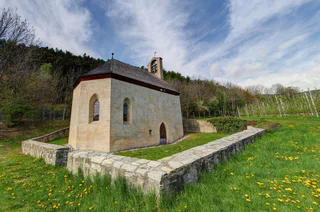Zwiedzając 31 wyjątkowych miejsc wzdłuż Alpejskiej Drogi Sztuki Romańskiej - Schodów do Nieba między Południowym Tyrolem a kantonem Gryzonia, nadal można odkryć szczególne cechy sztuki i kultury tamtych czasów, w tym jej charakterystyczne symbole i elementy budowlane. Zachwyć się zarówno małymi, nieznanymi obiektami kulturalnymi, jak i większymi, bardziej znanymi miejscami, takimi jak zamek Schloss Tirol, klasztor św. Jana w Müstair i opactwo benedyktyńskie Marienberg. Romański był czymś więcej niż tylko stylem artystycznym, był duchową ideą wyrażoną przez budynek, obraz lub rzeźbę. Architektura i kosmos obrazów zostały zaprojektowane jak świątynia, każda inspirująca drugą w swojej monumentalności. W kościołach odkrywano mityczne stworzenia, syreny, centaury i pożerające kolumny demony. Zgodnie z ówczesnym światopoglądem, stworzenia te zamieszkiwały strefy peryferyjne płaskiego dysku Ziemi i ilustrowały kontrast między boskim porządkiem a ludzkim chaosem. Podziwiaj freski malarzy, którzy w tamtych czasach byli nieznanymi rzemieślnikami. Tacy rzemieślnicy pracowali w służbie czegoś poza sobą i stworzyli ilustrowany teologiczny kosmos dla swoich pracodawców.

1/3
Church "St. Karpophorus"
Tarres/Tarsch, Latsch/Laces, Vinschgau/Val Venosta































